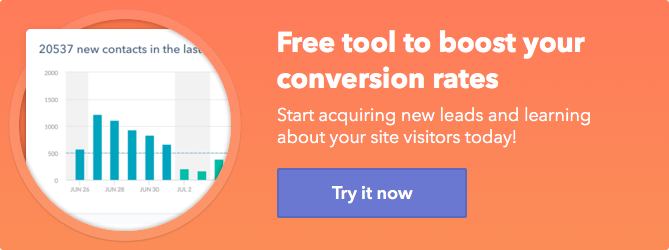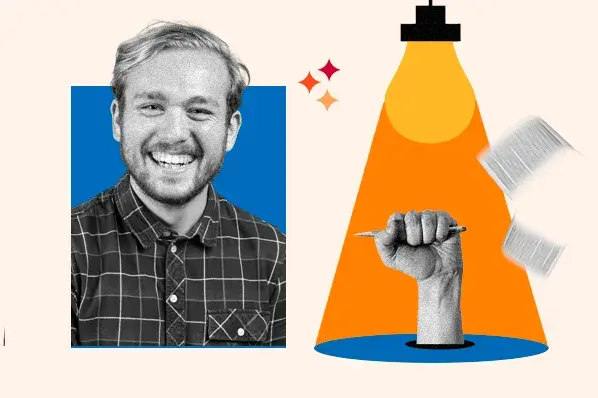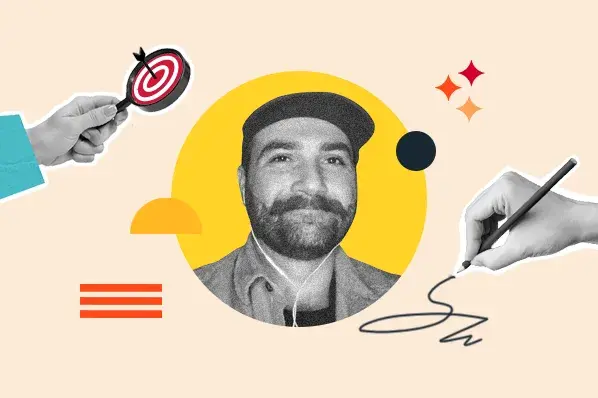From her own witty introduction in her AMA on Inbound.org, Joanna Wiebe makes it clear that she has a lock on copywriting. And she's not just any copywriter. Joanna's a “conversion copywriter” (a phrase my copywriter friends may want to adopt for their LinkedIn profiles), meaning she writes content that drives conversions and sells products. And she has a lot to say about how to make your words count -- in dollars and sense.
In her AMA, Joanna goes into the details of copywriting price points, building a business, and, of course, how to write copy that converts and delights. I'd urge you to check out the full thread, but if you want a quick summary of some of her best copywriting advice, check out the nine tips below.
The 9 Top Copywriting Lessons From Joanna Wiebe
1) Don't Go After "Big Fish" Clients for the Case Study
Everyone wants the “big fish” clients -- except for Joanna Wiebe.
She argues in favor of landing the middle-sized fish that are more agile, don’t hand you off to the “execution level,” and don’t require you to sign an NDA (so you can use them in case studies). She attracts them by giving “away as much info as I can.” This info includes lessons, formulas, experiments, and other extremely useful information. “Then reserve for purchase the stuff that people want after they’ve consumed your awesome free stuff.”
2) Spend 90% of Your Writing Time on Crafting Strong Headlines
Joanna had lots to say on headlines, which is no surprise since she spends 90% of her writing time crafting two of them for each piece (for split-testing purposes).
She also says: Don’t stuff them with keywords, and don’t listen to old-school SEO dictators on how to write them. Make headlines attention-grabbing, but not skeezy, and feel free to borrow from winning formulas.
Pro tip: Great headlines are often incarnations of the value proposition of the thing you’re trying to sell.
Another Pro Tip: Ask yourself this question about the prospect for whom you’re writing: “What was going on in your life that brought you to us today?”
A Third Pro Tip: On landing pages, align your headline and button copy to increase conversions.
3) Write a Really Great Headline by Using Data, “Even If," and "Without"
There’s a lot to be said about headlines, because they are THAT important. Here are a few things you can include to make your headline stand out:
- Add some data about the outcome
- Throw in an “even if” clause to overcome hesitation
- Or, replace “even if” with “without” -- what don’t you have to do to get the result?
4) Write Value Propositions -- Not Positioning Statements
At its core, a value prop should express what is unique and desirable about your offer -- don’t confuse it with a positioning statement. Do state something about what the product does. Maybe include the end benefit (you don’t want your value prop to be a laundry list of benefits). You may want to test value props that address different stages of awareness (see tip #5). Also, read Value Proposition Design by Alex Osterwalder and check out this worksheet from Marketing Experiments.
5) Familiarize Yourself With the Types of Awareness
There are a few different types of awareness that people will have during the sales process. Depending on their stage of awareness, they will need different content and messaging:
- Pain Aware people respond to seeing solutions to their pain, or even their pain itself.
- Solution Aware people respond to high-level benefits -- so don’t think of the problem, folks, think of the solution.
- Brand/Product Aware people want to see the biggest and best benefit your product has to offer before you introduce them to the rest of the benefits. They love the phrase "But wait, there’s more!"
- Problem Aware people realize they have a problem ... but they have no idea how to solve it.
- Completely Unaware people are more clueless about their problems than Alicia Silverstone in the ‘90s.
6) Embrace the Similarities Between Value Props and Taglines
This is what a valueproptagline looks like:
Kayak: Search one and done.
Sometimes, the best taglines are your value props, but whittled down even smaller while maintaining specificity. (And hey, if it was easy, we wouldn’t need people like Joanna Wiebe!)
7) Keep Swipe Files for Inspiration
Haven’t heard of a swipe file? It’s a collection of memorable content that you can then use for ideas. Save what you love, and what you noticed – good or bad. Then, when the well runs dry, you’ve got a handy file of inspiration.
8) To Write Content That Surprises, Shocks & Generates Shares, Pick a Fight
Not a person -- unless you’re willing to burn bridges -- but take on an accepted way of doing things and turn it on its head. Be provocative, but not insulting.
Still stuck on what to write about? Survey your blog visitors and email subscribers on topics interest them most, and mine your customers' FAQs.
9) Eschew the Top 10 List for the Top 9 List
Top X lists (whatever the number) still work well if -- and only if -- they add something meaningful to a timely conversation. Be different. Be better.
Also, odd numbers often work better than round numbers, which is why this list of Joanna Wiebe wisdom stops here.
Copywriting












